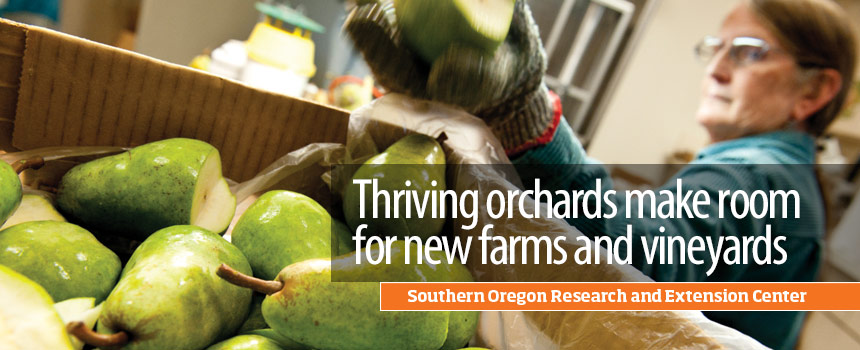Ripe pears in winter

Ripe pears are available to consumers well into winter, but they are a challenge to keep fresh after harvest. David Sugar has spent most of his career studying fruit pathology and physiology at SOREC, helping Oregon pear growers control postharvest changes and prevent economic loss.
Harvested pears need to be cooled in order to ripen properly. Required cooling time and temperature varies among pear varieties, as does the amount of ethylene gas, a naturally occurring fruit hormone which the fruit must produce to initiate ripening. Sugar has been able to reduce ripening time and extend storage time for several commercial varieties. This means getting some winter pears to market sooner and for a longer time, up to six months for Comice.
[caption caption="Pear researcher David Sugar working from a controlled atmosphere chamber at SOREC. (Photo by Lynn Ketchum.)"] [/caption]
[/caption]
Once off the tree, pears continue to breathe. Sugar has tested plastic packaging in which the fruit creates its own controlled atmosphere to extend fruit storage life. He found that the passive infiltration of oxygen in the bag can keep pace with pear respiration, and that elevated carbon dioxide in the bag can suppress fungal diseases. In addition, Sugar has found that managing levels of nitrogen and calcium in pear orchards can enhance resistance to postharvest decay. And a particular strain of yeast can be applied to the pears after harvest that works to inhibit the growth of rot fungi.
In partnership with growers and colleagues on campus and at Hood River, SOREC scientists identify pests and diseases, develop efficient pest control strategies, and provide a variety of information for growers in both regions in support of Oregon’s $134 million pear industry.
